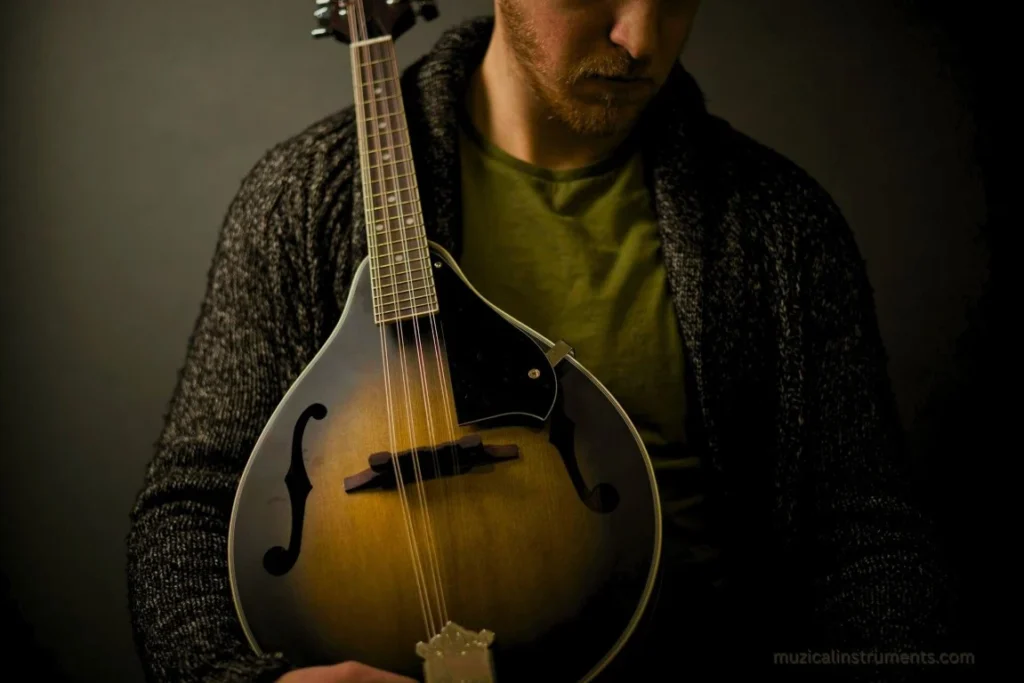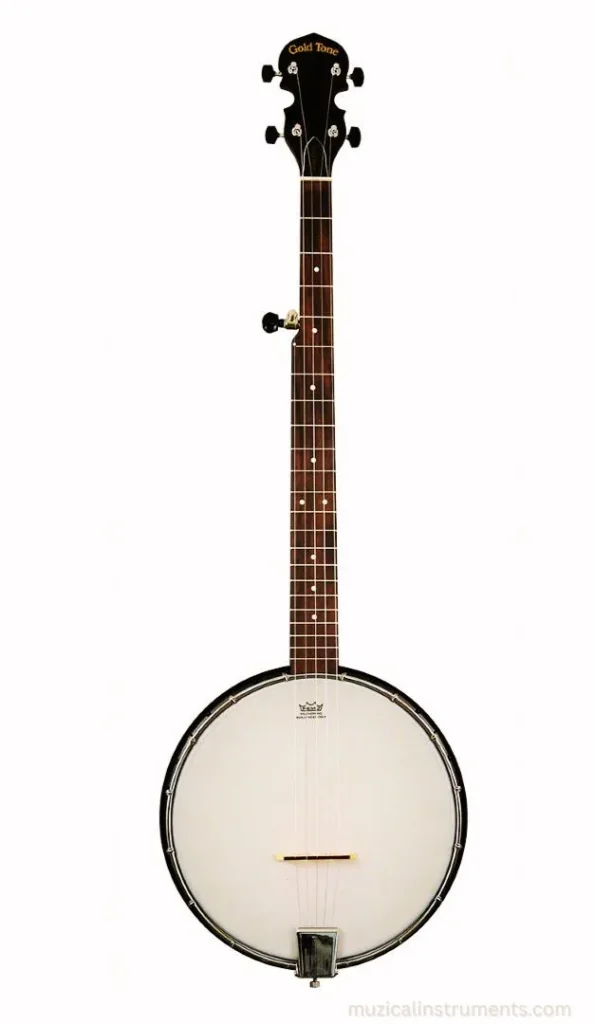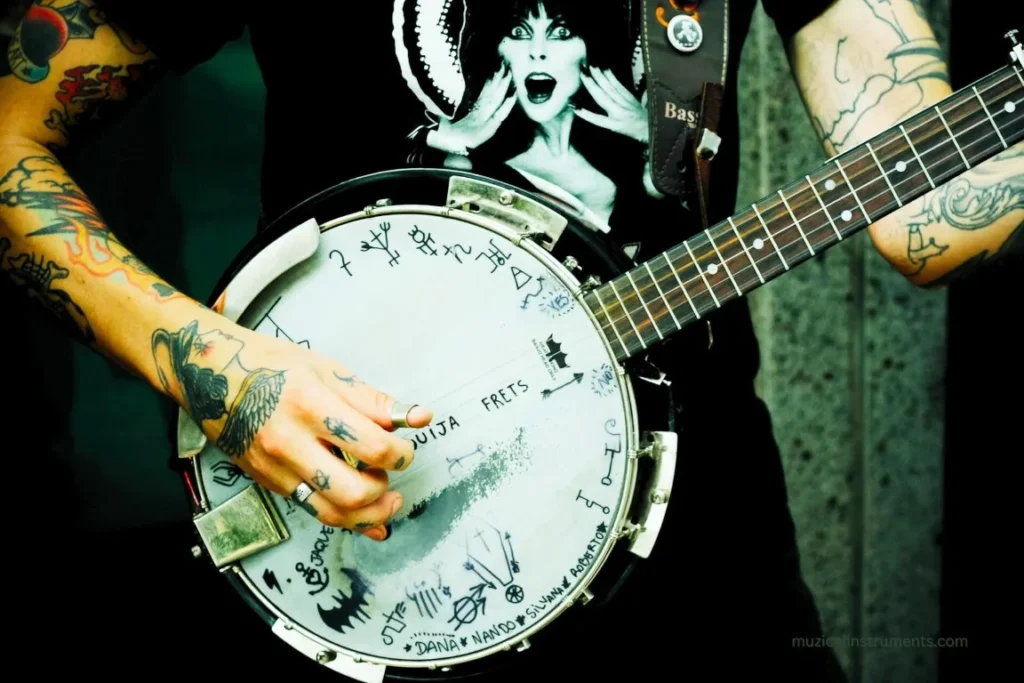What to Look for in a Good Travel Banjo: A Simple Buying Guide for You
Regular banjos are too big, heavy, and won’t fit in your bag. It feels like a hassle to carry.
That’s why many players switch to a travel banjo. It’s smaller, lighter, and built for the road. Some weigh just 3 or 4 pounds. Others have shorter necks, around 19 to 23 inches long, so they’re easier to pack.
But don’t worry, it still sounds great. The tone is full and clear, even in a small size. Many are made from strong wood like maple, or even plastic that doesn’t warp in the heat or cold. That means you can play anywhere, in any weather.
Some models even come apart, so they take up less room. Most include a soft gig bag to keep them safe. And the best part? You don’t need to spend a ton. A good one costs between $150 and $400.
Here, you’ll learn what to look for, so you can find the right travel banjo for your next trip.
Keep The Travel Banjo Light: Why Weight Matters
When you’re on the move, every pound counts. A regular banjo can feel heavy after a few blocks. Now imagine carrying it through an airport or across a campsite.
A travel banjo is much lighter. Many weigh just 3 to 4 pounds. Some even less. That’s about the same as a small laptop or a pair of boots. You can hold it in one hand without feeling tired.
Light weight makes a big difference. It’s easier to pack. Easier to carry. And way more fun to play when you’re not struggling to hold it.
So when you shop, check the weight first. Look for something that feels easy in your hands. If you can hold it for a few minutes without strain, you’re on the right track.
Some great light options? The Gold Tone AC-1 and Magic Fluke Firefly. Both are made for travel and feel almost like toys, until you play them.
Make Sure The Travel Banjo Fits: Size and Scale Length

When you travel, space is tight. You don’t want a banjo that sticks out of your bag or bumps into people on the train. That’s why size matters.
A travel banjo is shorter than a regular one. Most are under 30 inches long. That means you can slide it into a backpack, a car trunk, or even an airplane overhead bin.
The scale length, that’s the part where the strings stretch, also plays a role. A short scale, around 19 to 23 inches, makes the banjo smaller and easier to pack. It also means less stretch when you play, which can be nice for small hands or quick practice.
Smaller doesn’t mean harder. You can still play real songs, use the same chords, and get a clean sound. It just feels lighter and takes up less room.
A few good choices here? The Gold Tone Plucky has a 19″ scale. The Deering Parlor Goodtime is around 23”. Both are easy to hold and simple to travel with.
Before you buy, check the total length. If it’s under 30 inches, you’re good to go.
Don’t Settle for Bad Sound
Just because it’s small doesn’t mean it should sound bad.
A good travel banjo still gives you a bright, clear tone. Some even sound close to a full-size banjo. It all depends on how it’s built.
Look for one with a solid rim that’s the round part of the body. Many use composite plastic or thin wood that’s strong but light. The head (the top part you strum) should be tight and smooth. That helps the sound pop out, not get stuck inside.
Short scale banjos may have a bit less “ring” than big ones. But they can still sound full and fun. Some even cut through better when you’re playing outside or with a group.


Want some that sound great? Try the Gold Tone AC-1. It’s small but loud. The Magic Fluke Firefly also has a sweet, warm sound. Both are easy to carry and still make real music.
Here’s the trick: Always listen before you buy. Look for sound samples online, or play it in the shop. If it sounds flat or weak, skip it. You want something that makes you smile the first time you strum.
Easy to Tune, Easy to Play
A travel banjo may look different, but it should still be easy to play.
Most small banjos use standard tuning, just like big ones. That’s open G perfect for bluegrass, folk, or simple strumming. But some very short ones, like the Gold Tone Plucky, are tuned a little higher, like cGCEG. That’s still fine, it just sounds brighter.

Don’t let the tuning scare you. You can still use the same chords and notes. If it’s tuned higher, you can either play as is or use a capo to match other players.
Now let’s talk about how it feels in your hands. A shorter scale length means the frets are closer. That’s easier on your fingers and great for small hands. The string action how high the strings sit should be low but not buzzy. That helps you play longer without hurting.
Before you buy, check two things:
- Does it hold tuning well?
- Does it feel comfy when you play?
Good picks for this? The Deering Goodtime Parlor plays super smooth. The Firefly by Magic Fluke holds tuning great, even outside.
Simple tuning. Soft feel. Easy play. That’s what you want in a travel banjo.
Durable for Travel, Not Delicate
You don’t want a banjo that breaks the first time it bumps something. Travel can be rough. That’s why you need one made with tough stuff.
A good travel banjo uses strong, light materials. Many skip fancy wood and use composite rims or plastic bodies. That’s a good thing it makes them lighter and harder to crack. Some, like the Gold Tone AC-1, are made almost fully from plastic but still sound great.
If you want wood, choose hard ones like maple. They hold up better than softwood. Look at the neck, too. A maple neck won’t bend or warp when the weather changes.
Here’s another tip: stay away from super cheap ones with weak parts. They might look nice, but the frets, pegs, or bridge could break fast. And if the neck shifts, your banjo won’t stay in tune.
Need tough models? The Magic Fluke Firefly is made from plastic and maple built like a tank. The Deering Goodtime uses real wood but is still strong for travel.
Rain, heat, cold, or dust your travel banjo should be ready for anything.
Smart Designs That Save Space
Some travel banjos go even further. They don’t just feel small, they break down to save even more space.
Yes, really. Some models let you take the neck off the body. Others fold or twist apart. That means you can pack them in a smaller bag, or even a carry-on. Super handy for planes, buses, or long hikes.
One cool example? The Tranjo. It’s a banjo made just for travel. You can unscrew the neck, tuck it away, and put it back together in minutes. It still sounds great and stays in tune.
These designs are made for people like you who don’t want to stop playing, even when they’re far from home.
Not all travel banjos come apart, and that’s okay. But if space is really tight, it’s worth looking at models with these clever tricks.
Before you buy, ask:
- Can it break down or fold?
- Does it need tools to set up again?
- Will it stay in tune after packing?
If the answers are yes, no, and yes you’ve found a travel winner.
What’s a Good Price for a Travel Banjo?
You don’t need to spend a ton to get a good travel banjo.
Most solid travel banjos cost between $150 and $400. That’s a sweet spot. In that range, you get good sound, strong parts, and easy play. Perfect for trips, camping, or daily practice.
Some cheaper ones cost under $150. But be careful. They might not stay in tune. The frets may feel sharp. The neck could twist. You’ll end up fighting the banjo not playing it.
Want something nicer? Some models go over $500. These often have better wood, cleaner sound, and pro-level parts. But you don’t need to spend that much to enjoy playing on the go.
Here’s a quick guide:
$100–$150: Budget picks. Great for kids or rough travel. Just check build quality.
$150–$300: Most popular range. Great sound, light, easy to carry.
$300–$500: Stronger builds, better tone, travel cases included.
$500+ Pro-level. Best if you tour or record while traveling.
Tip: Always check if the banjo comes with a case. A gig bag can save your instrument (and your money).
Best Travel Banjo Models (Quick Picks)
Still not sure which one to choose? No worries. Here are some of the best travel banjos all great for sound, size, and price.
| Model | Weight | Scale Length | Material | Key Features | Price Range |
|---|---|---|---|---|---|
| Gold Tone AC-1 | 3.75 lbs | ~23″ | Composite plastic rim | Lightweight, full tone, includes gig bag | ~$220 |
| Magic Fluke Firefly | ~4 lbs | ~23″ | Maple neck, poly body | Bright tone, strong build, stylish design | $270–$350 |
| Gold Tone Plucky | ~2.8 lbs | 19″ | Maple neck, open back | Tiny size, great for kids or hiking, fun tone | <$200 |
| Deering Goodtime Parlor | ~4.5 lbs | 23″ | All maple | Strong build, pro feel, warm sound | ~$500 |
| Tranjo Traveler | ~4–5 lbs | Varies | Wood & metal | Neck detaches for packing, great tuning stability | $600+ |
Each one has its own style. Some are light and simple. Others are strong and fancy. Pick what fits your trip, and your hands.
Curious about other folk instruments? Learn the difference between mandolin and bouzouki before you plan your next travel pick.
Don’t Forget the Case
Even the best travel banjo won’t last long if you toss it in a bag with no protection.
Real talk: even a $300 banjo is useless if it breaks in your luggage. That’s why you need a solid case, no matter how tough your banjo is.
At the very least, get a padded gig bag. It keeps your banjo safe from bumps, scratches, and drops. Look for one with thick padding and strong zippers. Bonus points if it’s waterproof, rain happens, and wood doesn’t like getting wet.
Some banjos come with a gig bag. Others don’t. If yours doesn’t, grab one before your first trip.
Traveling by plane or bus? Think about a hard case. It’s heavier but gives more protection, especially if you need to check your gear.
Quick tips:
- Make sure the case fits your banjo snug.
- Check the straps, shoulder straps make carrying easier.
- Look for a front pocket for your tuner, capo, and picks.
Protect your gear. One small case can save you hundreds and your music.
FAQ
Can a travel banjo sound like a full-size one?
Yes, many do! Smaller banjos can still sound bright and clear. Some even have a warm tone like full-size models. It depends on the build, materials, and tuning.
Do I need a special tuner for a travel banjo?
Nope. You can use any clip-on tuner, just like with regular banjos. The tuning might be higher on short-scale models, but the tuner still works.
Is a short scale banjo harder to play?
Not at all. In fact, the frets are closer together, so it’s easier on your fingers. Great for beginners or players with smaller hands.
Can I bring my travel banjo on a plane?
Yes! Most travel banjos fit in overhead bins, especially if you use a gig bag. Some even break down smaller. Just check airline rules before you fly.
What’s better, a gig bag or a hard case?
A padded gig bag is fine for short trips. It’s light and easy to carry. For flights or long travel, a hard case gives more protection.
Will I need to retune a lot while traveling?
Sometimes. Changes in weather or bumps can affect tuning. But good travel banjos hold tune well especially ones with solid necks and strong tuners.
Are travel banjos good for beginners?
Yes! They’re often easier to hold and play. Some people even start with a travel banjo before moving to a full-size one.
Final Notes Before You Go
You don’t need to leave your music at home just because you’re on the move. The right travel banjo lets you play anywhere on the road, at the campsite, or in your hotel room.
Now you know what to look for:
- Light weight that’s easy to carry
- Small size with a comfy scale
- Good sound that makes you want to play
- Strong parts that can handle the trip
- A safe case to protect it all
Whether you’re picking the Plucky for hikes or the Goodtime Parlor for smooth play, you’ve got great options. Start with what fits your hands, your space, and your sound.
Pick smart. Pack light. Play often.
Your banjo goes where you go.
